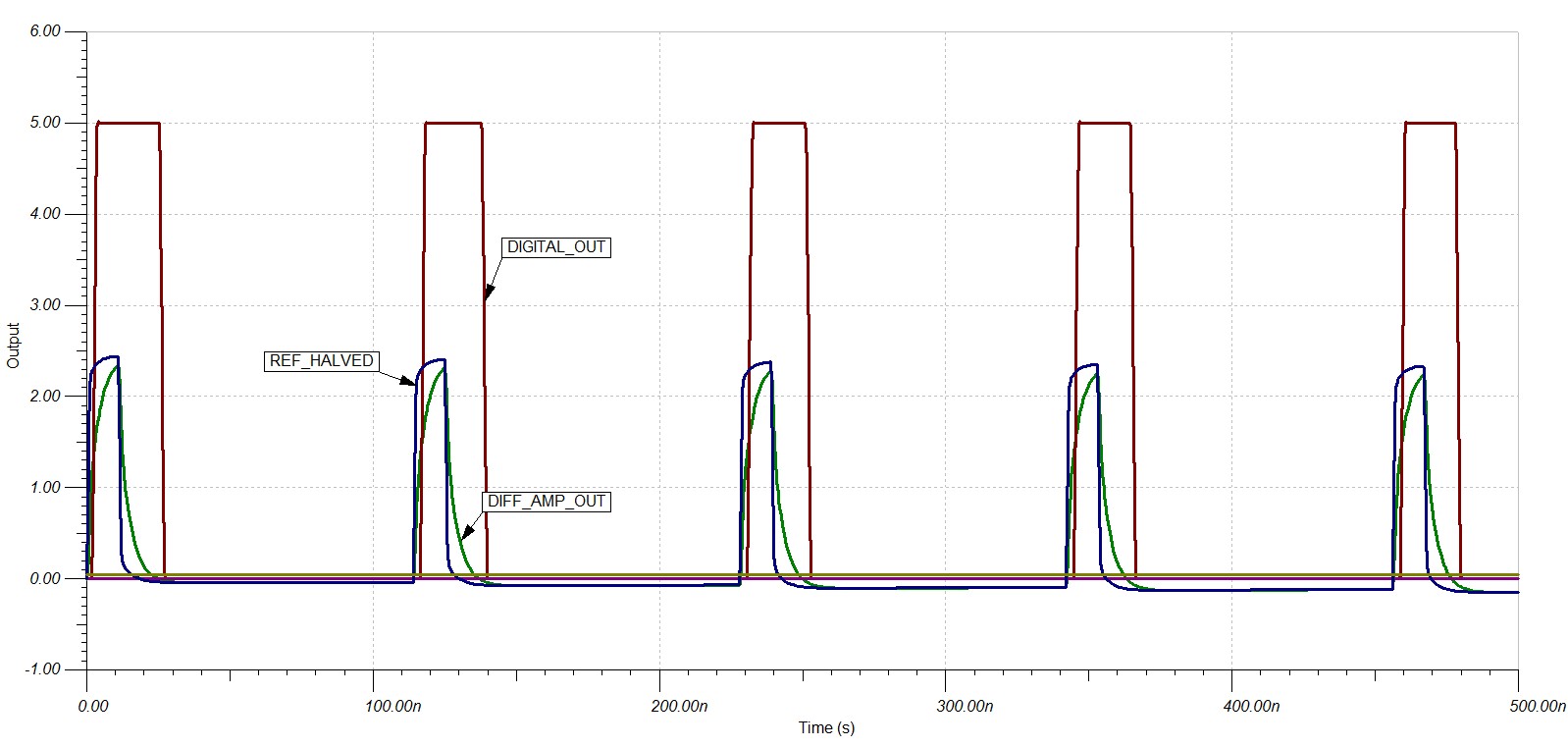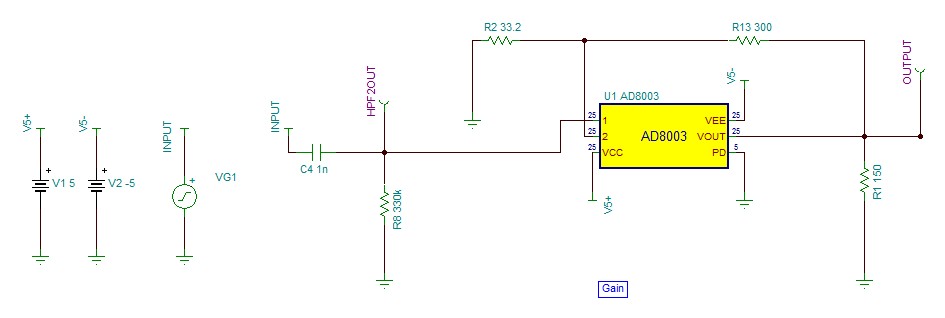Before entering in to problem:
My application is a laser pulse detection. In this process, when a laser pulse falls on a photo diode, it generates current. Later stages include a I-V conversion, gain, difference amplifier and comparator.
My current problem with I-V conversion can be seen here.
My pulse characteristics:
pulse width min: 10 ns max: 150 ns rise/fall time: 2 ns - 5 ns pulse to pulse width:22 µS
How I selected the opamp for gain and difference amplifier stages
Key parameters: BW - bandwidth and SR - Slew Rate
From this literature I found my BW can be calculated by the formula:
BW = 0.35/(rise time) = 0.35/5 ns = 70 MHz
Now the slew rate is to be calculated:
SR = 2 * 3.14 * BW * Vp = 2 * 3.14 * 175 MHz * 4 V = 2198 V/µs
So matching both these parameters is a CFA AD8003 from Analog. When I go for high slew rates and high BW almost all opamps avaliable are CFA's!
What is worrying me?
Without any notion when I used CFA for my difference amplifier stage, with unity gain using a 500 ohm resistor for Rf and Rb, the results seemed stable, but it is this statement from Texas Instrument technical literature, clearly saying:
the first difference between voltage feedback and current feedback—the input impedance of current feedback op-amp inputs is very different. Because the inverting input has low impedance, current feedback amplifiers are not good for balanced systems such as differential amplifiers
CFA as difference amplifier
So my results are like this for a difference amplifier followed by a comparator. The pulse here is 10 ns width and 1 ns rise and fall times and repeating at a 150 ns rate.
Why is the pulse quite expanded? Which capacitor stage has done it I didn't understand.
CFA as amplifier with gain
The results for the above circuit are also not as desired (I just see 0 V output), why so?



